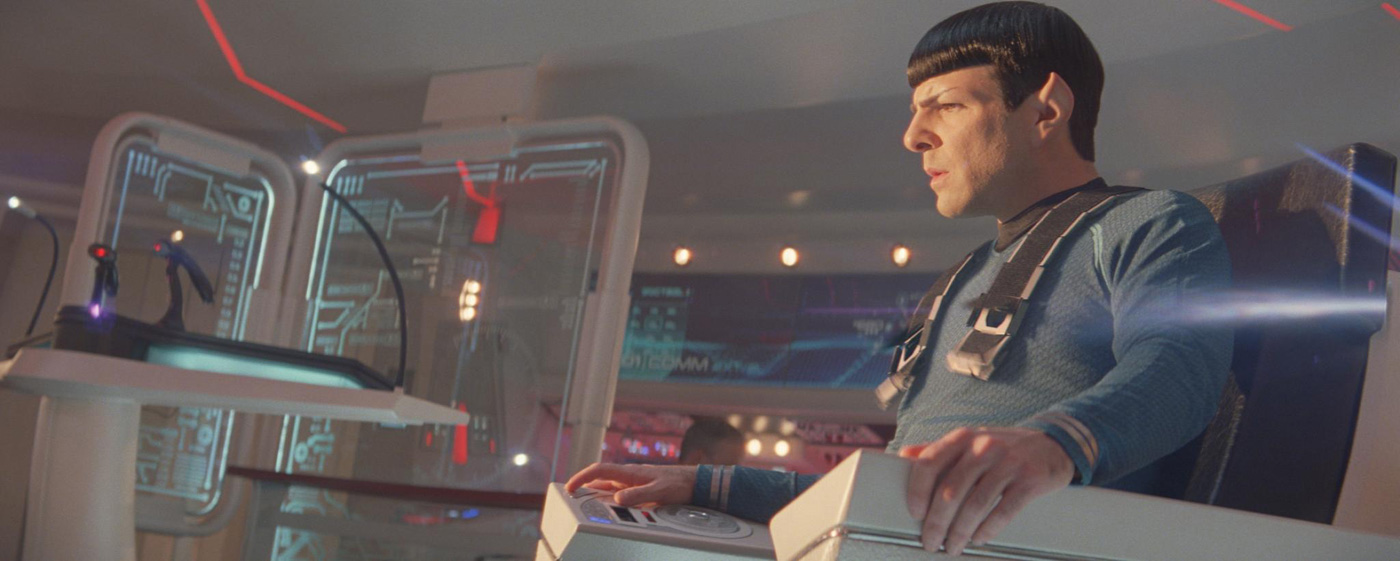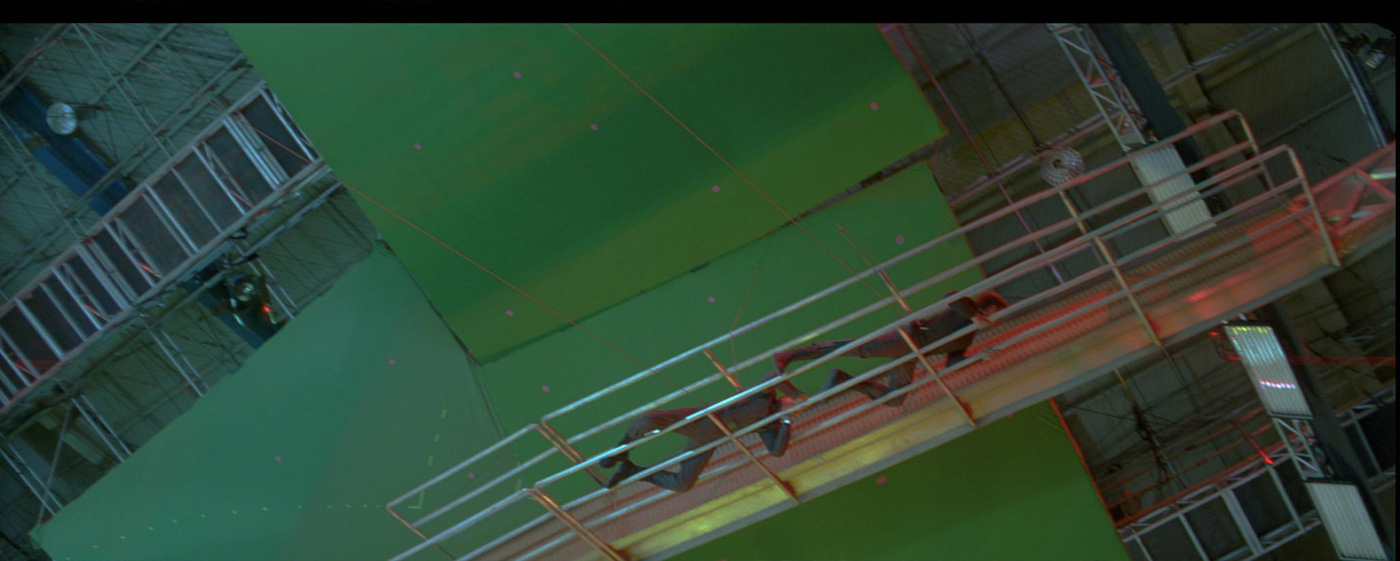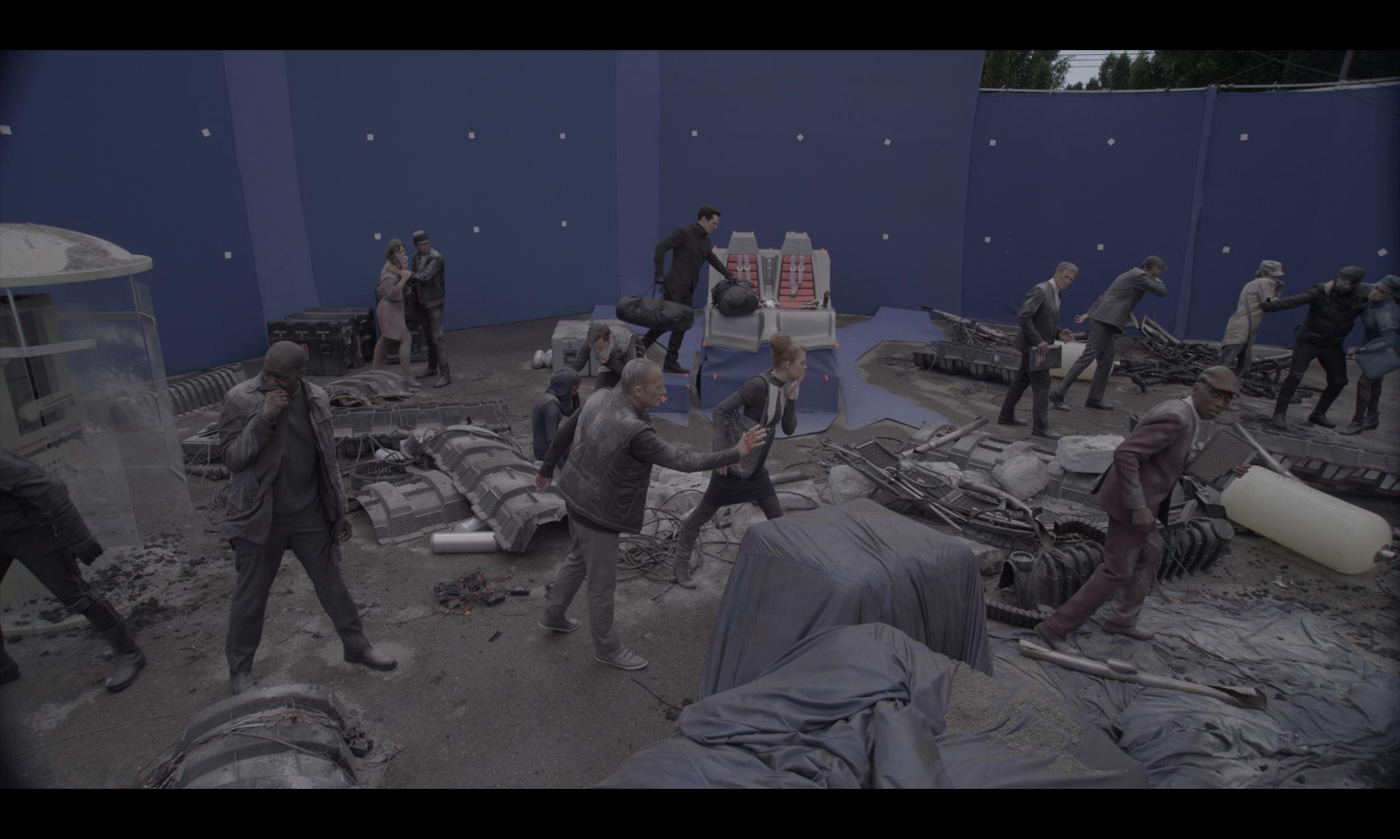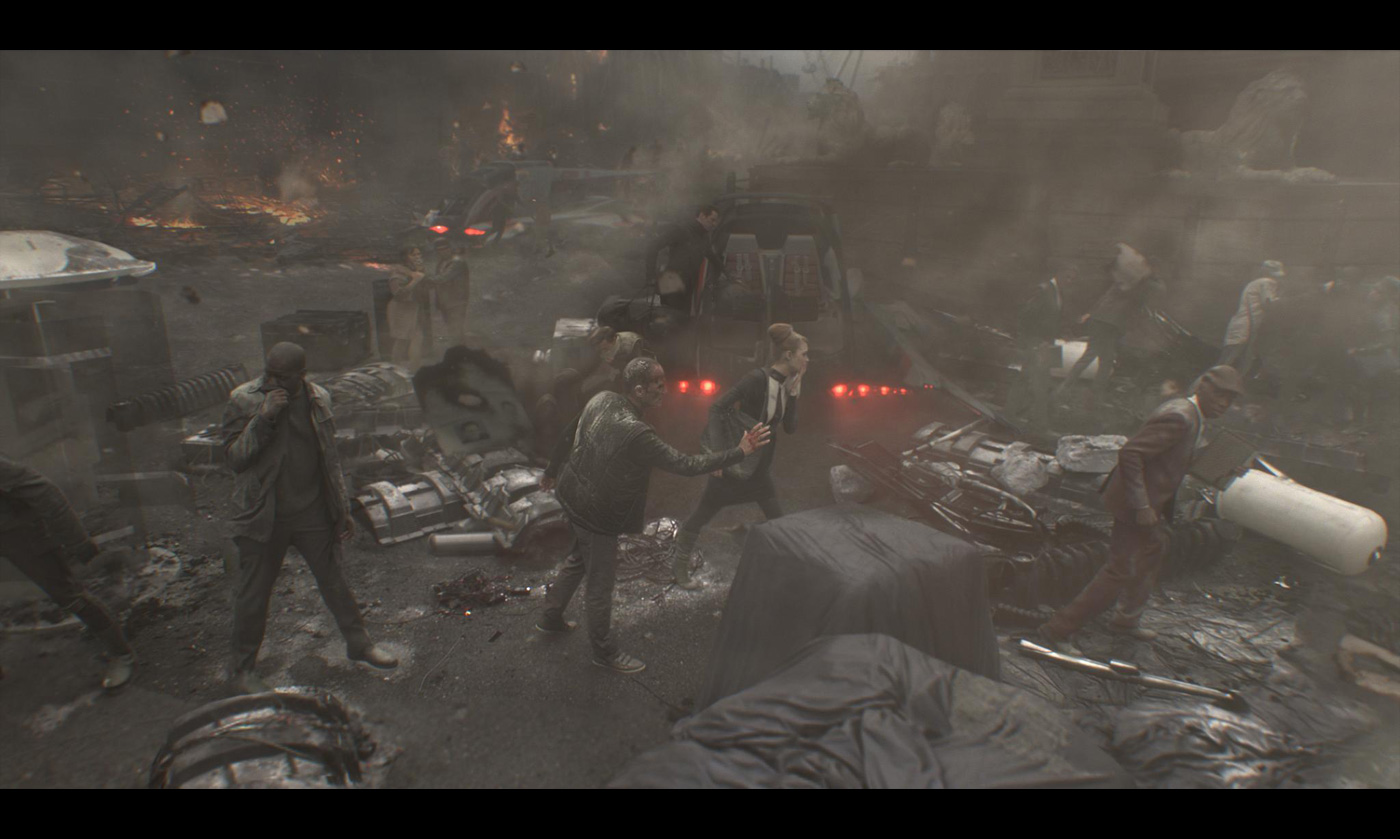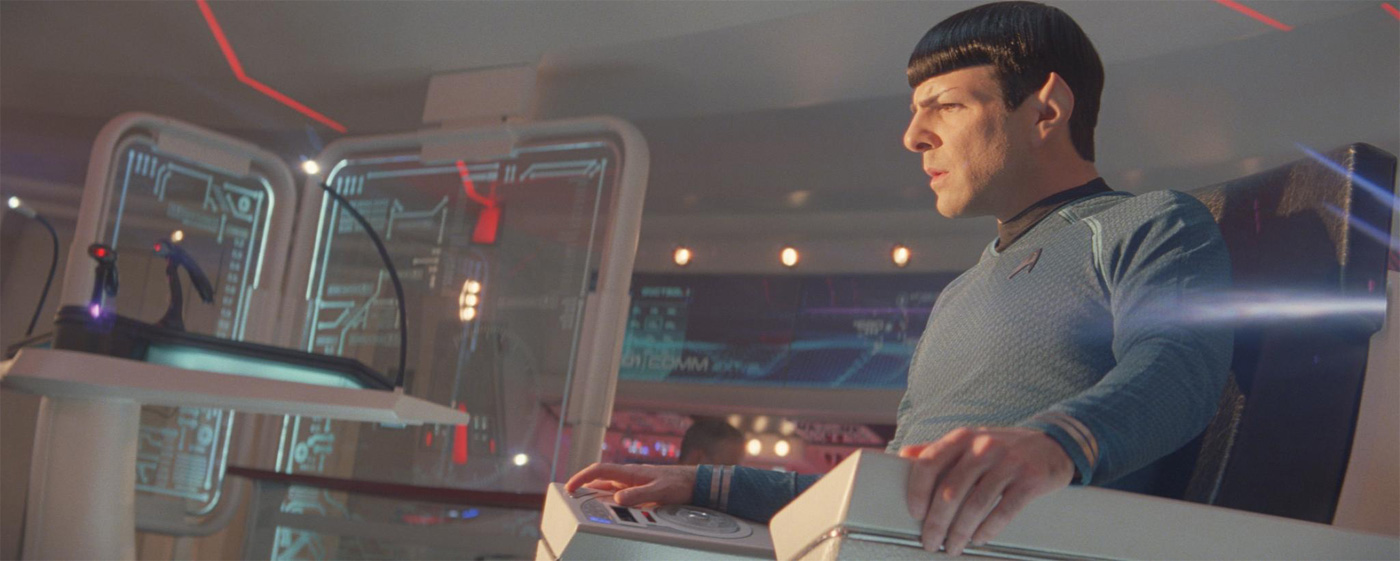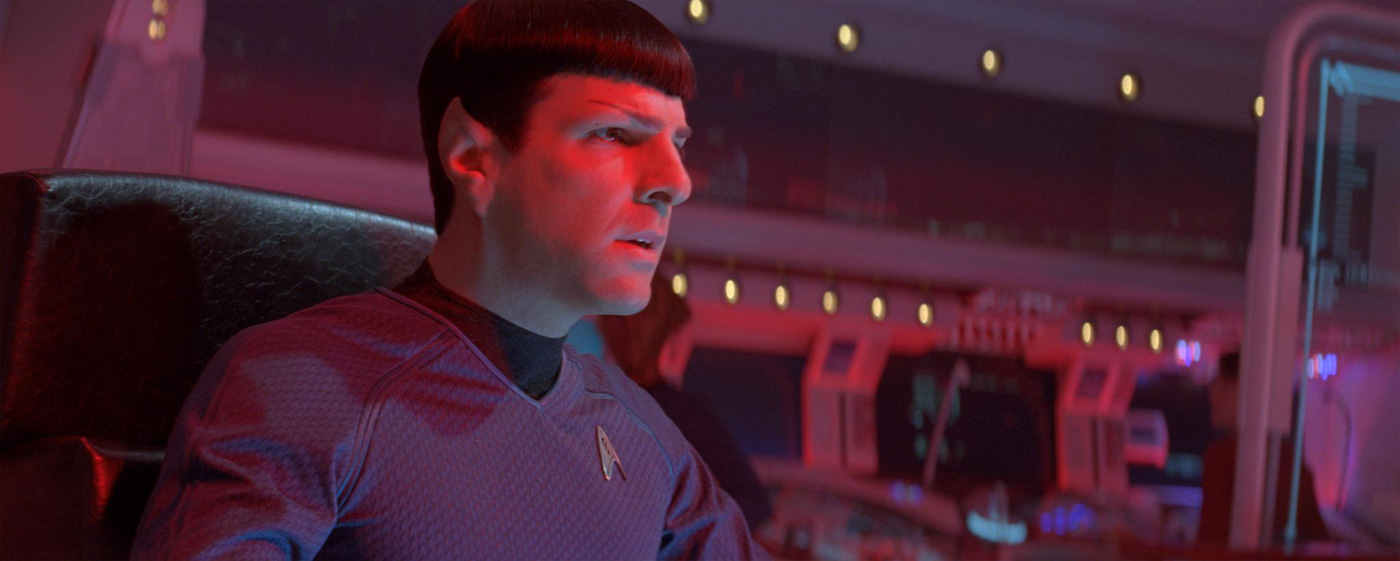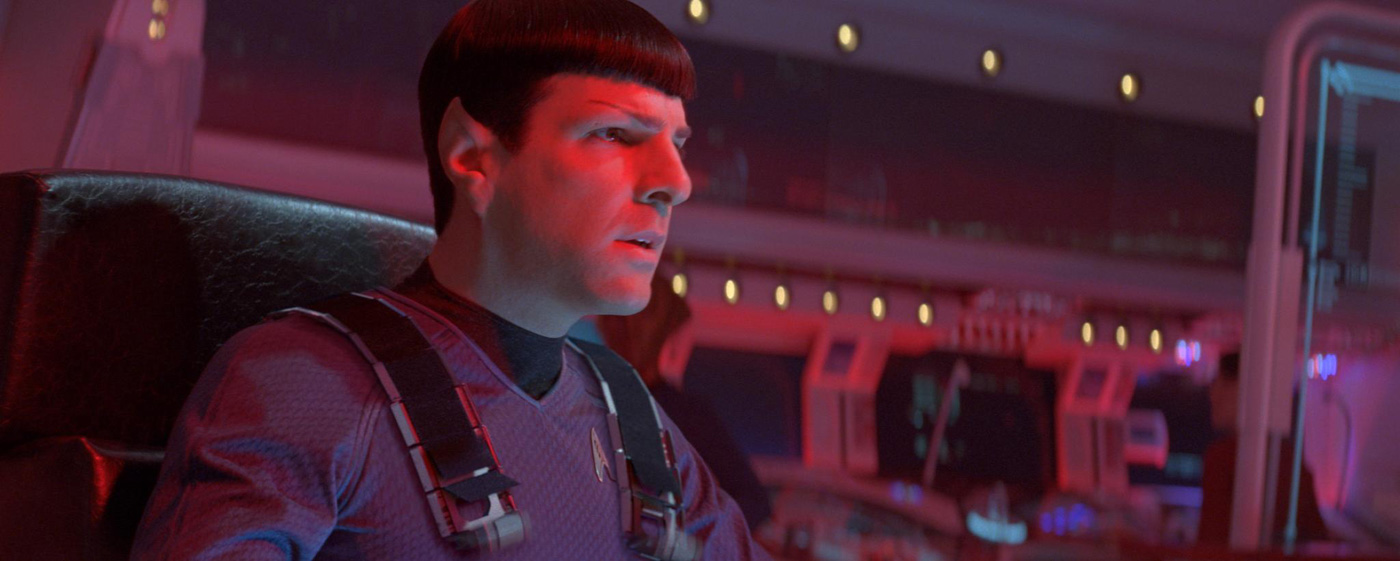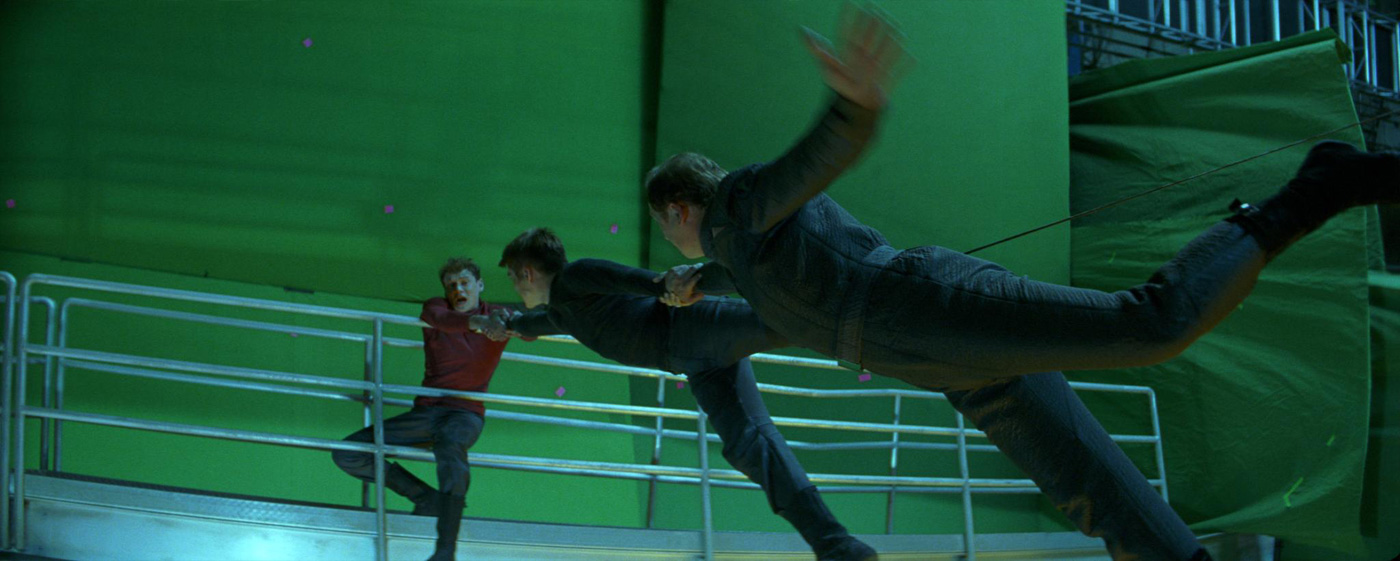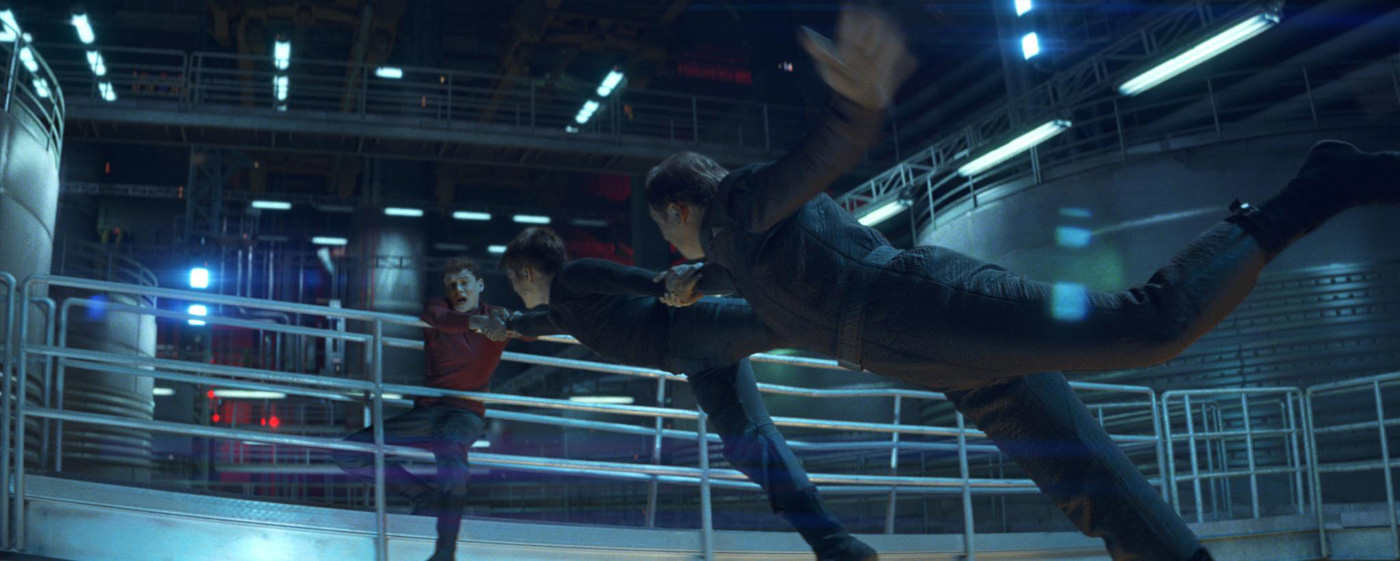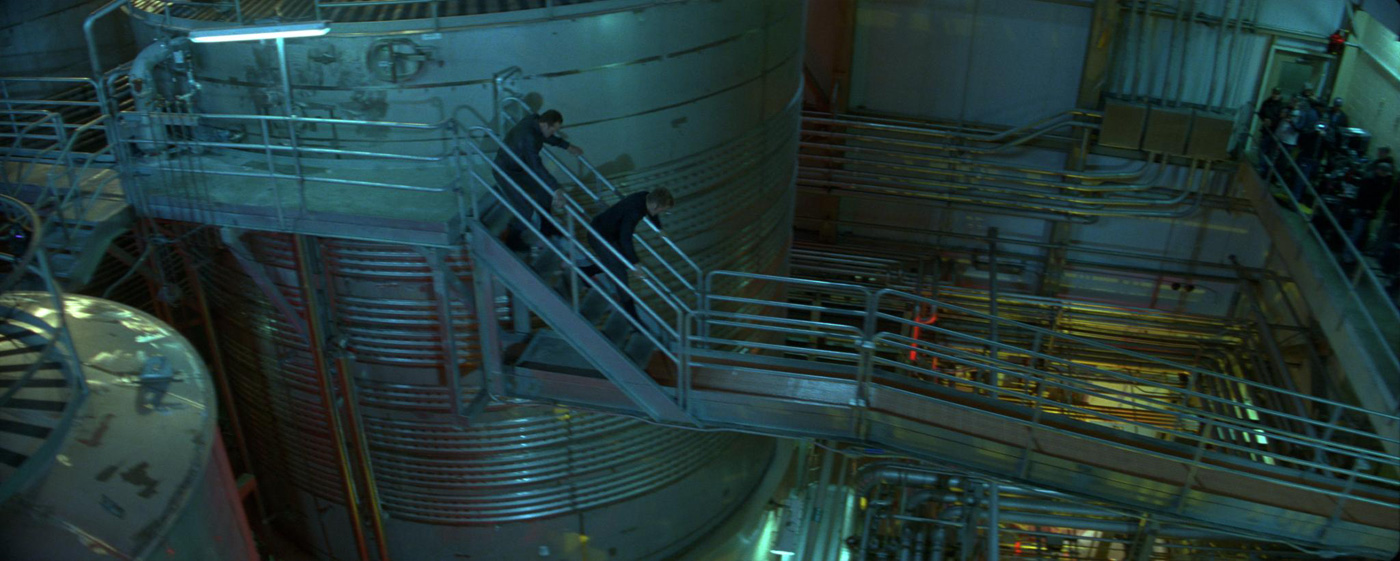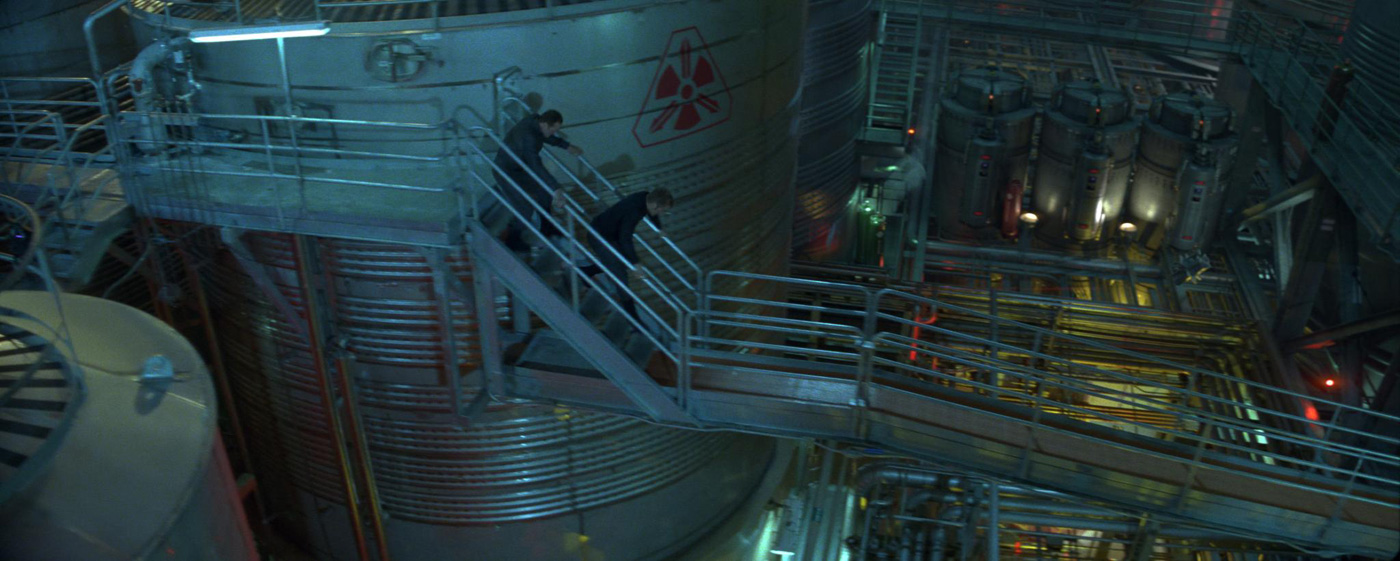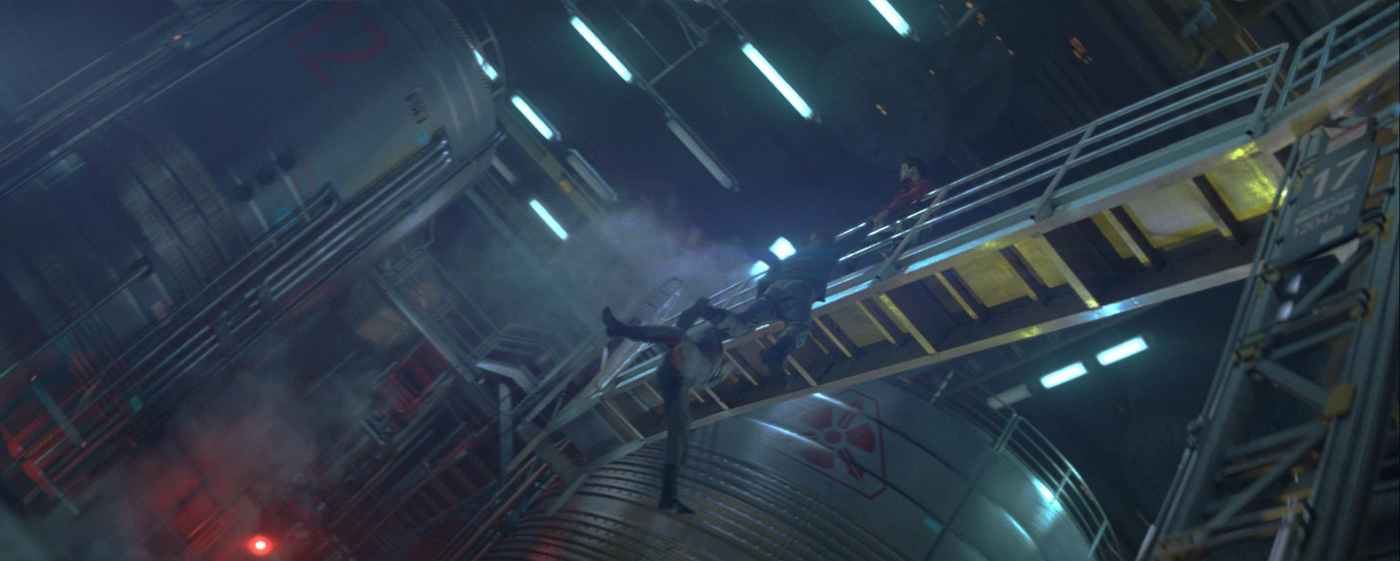A few months ago, Kevin Baillie explained the work of Atomic Fiction of Robert Zemeckis’ FLIGHT, for which they won the Satellite Award for Best Visual Effects. This time he talks about his work for STAR TREK INTO DARKNESS.
What was your feeling to be part of the Star Trek universe?
Not only did everyone on our crew grow up with Star Trek as an influence in our lives, but we unanimously loved JJ Abrams did with his first Trek film as well. We really felt like it did tremendous justice to a modern-day version of the classic (and tremendously important) sci-fi franchise, so we could have been more proud and excited to be involved in the second incarnation of JJ’s Trek universe!
How did Atomic Fiction get involved on this show?
Atomic Fiction got involved in STAR TREK INTO DARKNESS thanks to a wide variety of factors, as is usually the case. We’d actually been bugging Ben Rosenblatt at Bad Robot for years to work with them. One night, just after I’d just gotten home from work, I remember receiving an email from Ben simply asking « Wanna do some shots on TREK? » Several test shots, tons of bidding, lots of discussion with the VFX Producer Ron Ames, and a few months later, we were officially on the show!
How was the collaboration with ProductionVFX Supervisor Roger Guyett?
No bullshit: Roger was flat-out fantastic to work with! He’s got a fantastic sense of artistry, a great eye, obsessive attention to detail and, perhaps most importantly, is inside of JJ’s head like nobody else! One of the things that made working with Roger so enjoyable is the creative leeway he gave us to come up with cool ideas and designs based on a pretty high-level brief. The « torpedo trip » planet environment, the layout of the Engine Room, how the CG seat belts moved, and the look of the medical android faces were all designed that way. Having that level of trust and creative input helps to get everyone on the crew excited and incredibly invested in the quality of the final product!
What have you done on this show?
Atomic Fiction completed about 85 shots on the show. We worked on a wide variety of scenes – mostly « self-contained » type of stuff that fell outside of the realm of what would’ve had to cross-polinate with Pixomondo or ILM’s already-existing work. Specifically, we did the following work: the Torpedo Trip scene, the Engine room scene, a very cool « Google Earth-like » fly-through of a frozen moment in time for the Room Attack sequence, animating Enterprise seat belts, medical android faces, and a number of other small bits and pieces throughout the film. For a subset of the Torpedo Trip and Engine Room shots, we worked together with Bad Robot’s in-house team Kelvin Optical, led by Adam Gersetl, feeding them 3D elements for them to complete the final comps. This helped from both a budgetary and schedule perspective, and we had a blast working in conjunction with them!
Did you received assets from ILM crew?
Yes, we received assets from both ILM and, more often, Pixomondo. The « jump ship » that appears in the Room Attack sequence, for example, was originally a Pixomondo asset. Since we have a fairly diverse pipeline at Atomic Fiction, we were able to accept and reuse their assets (in this case, created using 3DS Max and V-Ray) fairly efficiently.
How did you approach and designed the sequence when Kirk explores the London bombing area?
That scene was a really interesting one! In all honesty, the « hero » shot was every VFX artists’ dream come true: to create a digital environment, freeze it in time, and just explore its every detail with a cool camera move! Roger Guyett designed the camera motion on a back lot, using a partial set to cover the immediate foreground set pieces. The actors stood as still as they could while the camera operators did their magic.
Can you explain to us in details about the creation of this frozen moment?
Once we got our hands on the footage for the shot, the first step was for our Digtial Art Director Chris Stoski to do a couple of quick pieces of concept art to figure out what our world would look like. We then built the whole world, including simple representations of the practical foreground set pieces, in 3D. Using a combination of digital matte painting (done by Mat Gilson) and camera projections from the originally shot footage, we basically turned the entire shot into a 3D matte painting. Volumetric smoke, fire and ash elements were generated in FumeFX by Allan McKay. Once the shot was rendered, our compositing supervisor, Woei Lee, dialed in the various elements, including hero characters from the original footage (in order to maintain as much sharpness as possible). The end result is something pretty unique, and we’re super proud of how it turned out!
What references did you received for the planet onto which two characters opens a torpedo?
For the « Torpedo Trip » sequence, we had two bits of reference to go off of: the original plates, which had a small patch of gravel surrounded by green screen, and a bunch of photos from a black rock beach in Iceland. The mood of the Iceland reference was really stark, and we kept referring back to that as we designed the loop of the scene’s environment.
How did you created the environment for this planet?
One of our talented matte painters, Mieke Hutchins, created the final design for the scene. The goal was to create something that looks like it could’ve been filmed for real, was alien enough to look « different, » but not so alien as to appear « fantastic. » That was a tough challenge, and took many iterations of off-the-wall ideas, but we finally nailed down a look that was volcanic-inspired. Mieke then followed through with the final execution of the matte paintings, with the assistance of digital sculptor David Dame to create detailed 3D representations of the hero rock structures. Mieke rendered elements for every shot, including a « rock scatter » pass of real 3D rocks to blend the transition between painting and the plate, in 3DS Max using the V-Ray renderer. Anslem Von Seherr-Thoss created FumeFX simulations for the steam escaping the fissures in the landscape. Our compositors, led on the scene by Mike Terpstra, blended everything together using Nuke to handle some very tricky green screen extractions.
At a critical moment, the Enterprise crew is using futuristic seal belts. How did you designed them?
The seat belts were a fun design challenge, since they had to move in a believable way, despite the fact that their need to autonomously extend was physically impossible. Our CG Supervisor Mauricio Baiocchi came up with the idea for a design where each « link » of the seat belt is nested inside of the previous one, and they flip out with a multi-component mechanical action that happens on both the sides and the leading edge. The complexity of those overlapping actions gives the whole thing a very « positive » mechanical, « clickity-clack » feeling.
Can you explain more about the rigging and animation challenges?
The rigging and animation had two components: the creative animation, and the motion matching to « stick » the belts to the actors’ bodies. Surprisingly, the creative part of it was by far the easiest. We did a couple of tests, and Mauricio’s concept was so solid that both Roger and JJ immediately picked a version and we ran with it! Pinning the belts to the bodies was an entirely different ballgame. The actors’ mostly subtle body movements were extremely demanding on the animators: 1 pixel of slip in any axis would cause everything to look wrong. Having the creative animation « ride along » with a perfectly motion matched rig was no small rigging feat either, since we had to avoid a complex set of geometry interpenetrating. Mauricio’s rig, created in Maya and rendered using V-Ray, ended up handling all of these cases with great results (thanks to the hard work of our animators too, of course)!
How did you recreate the huge environment for the Engine Room?
The Engine Room environment was a pretty massive undertaking, from both a design and rendering perspective. we needed to expand on the foundation of the Budweiser factory in Van Nuys, since the opening shot of the scene was the only one filmed there (everything else was just the catwalk and actors on green screen). Everything else in the scene had to look consistent with it, including glossy metallic surfaces, just BIGGER!
We started off with LIDAR data and extensive photography of the set as reference, but our modeler Brian Friesinger started mostly from scratch, using the matchmove from the opening shot as a « sanity check, » and our Art Director Chris Stoski’s concept art for the remainder of the immediately surrounding « hero » space (about 100ft in either direction).
Beyond that, the digital matte team took over, and created a an interesting, « techy » space for the audience to enjoy. JJ and Roger didn’t want it to look as gritty as the Budweiser factory, so we introduced higher-tech looking components all over the place to « class it up » a bit and bring it into the world of the Enterprise. The scene was lit and rendered in Maya/V-Ray for the « hero » part of the set, led by Jim Gibbs, and 3DS Max/V-Ray for the matte paintings, led by Chris Stoski.
To give the shots that extra « kiss of love, » Chris and Jim worked together to create single frame « paint-overs » based on the final lighting, which were then reprojected onto the hero geometry. This allowed us to quickly give a view-specific « matte painting » touch of extreme detail without having to individually texture paint that detail onto thousands of pieces. I think it all worked out great in the end!!!
Can you tell us more about the filming of this sequence?
Roger 2nd unit directed this sequence, so you’re best off asking him and his team. All I know is that they concocted some amazing camera angles and compound moves for us to build upon!
How did you manage the clean-up work for it?
In order to achieve JJ and Roger’s desire to have the opening shot look less Budweiser-y, extensive paint work and set augmentation had to be done to the plate. Jen Cantwell and her team at The Paint Collective lent their expert hand to the paint work, removing years worth of scuff marks and corrosion from the large steel tanks. Our matte painters Leon Kogan and Chris Stoski added Trek-appropriate signs, readouts, lights, columns, and a fully-CG back wall to bring the environment more into the Star Trek universe.
Can you tell us more about the design and creation for the medical robot faces?
The medical robot faces were a cool one-off design treat for us. Chris Stoski created probably 20 different versions of what the faces could look like, using the police motorcycle cop from JJ’s first Star Trek as a « style guide » of sorts. JJ and Roger zeroed in on one of them, our creature artist David Dame built and textured it in Maya, and our lighter/comper Nèstor Prado rendered the final result and comped it to perfection!
What was the biggest challenge on this project and how did you achieve it?
Probably the biggest challenge on the show was rendering the Engine Room sequence. Blurry shiny metal surfaces with MANY light sources are notoriously slow to render, so we knew we’d have our work cut out for us from the get-go. Luckily, V-Ray is extremely fast at these kinds of things, and we were able to optimize our renders to get render times between 2 and 12 hours per frame for the hero material. Using ZYNC and Amazon’s EC2 cloud computing, we were able to expand our infrastructure to accommodate this large volume of rendering without having to break the bank expanding our local render farm!
Was there a shot or a sequence that prevented you from sleep?
To be honest, not really. I was equally nervous about all of them! (laughs) In all seriousness, Roger Guyett and Ron Ames were incredibly clear about what their expectations were, and we knew what we had to do to hit them. We weren’t going to let anything ship without it being 100% awesome, and there’s something comforting in that. We knew it would all be difficult, but we also knew how to get it there.
What do you keep from this experience?
It’s obviously a big deal for Atomic Fiction to have STAR TREK INTO DARKNESS on our resume. That said, I think the most important thing you can keep from any experience like this is relationships. We had a great time working with JJ, Roger, Ron, TJ, Ben, Adam and the whole team at Bad Robot and Kelvin Optical. I’m really looking forward to our next project with them!!!
How long have you worked on this film?
We started on the film in October, and finished in March.
How many shots have you done?
I believe the final shot count was around 85.
What was the size of your team?
We had a team of between 15-30 people working on the project at any one given time. That’s a pretty lean number, but we’re lucky enough to have extremely talented, generalist crew that can crank out lots of amazing shots at an extremely high quality level.
What is your next project?
We’re on set for DreamWorks NEED FOR SPEED at the moment. Other than that we, of course, cant’s say any more!
Thanks for taking the time to chat with me about our work on Star Trek!!!
A big thanks for your time.
// WANT TO KNOW MORE?
– Atomic Fiction: Official website of Atomic Fiction.
All pictures are copyrighted @ Paramount Pictures 2013
© Vincent Frei – The Art of VFX – 2013

